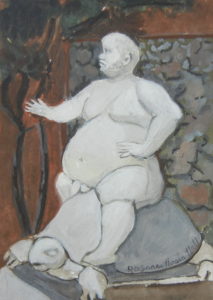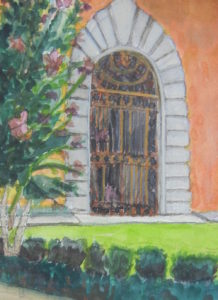I feel I am returning home again – maybe I should say, I am returning to my three Italian hometowns of Rome, Venice, and Florence. Every street corner, every canal, every cobbled street is familiar territory. This is my soul state of being alive, away from this world of commercialism, politics, war, and bad art.
In Florence, I visit Medici gardens which laid the groundwork for classical formal Italian gardens during the early Renaissance. I am fortunate to visit four gardens: Castello, Petraia, Careggi, and Boboli. I love Castello and Careggi the most. Castello is still well-kept with bed after bed of lovely flowering plants. It is surrounded by a tall wall which, in a way, keeps out the wild world beyond. I am the only visitor and share a lovely September day with busy gardeners.

Careggi, a prototype of all subsequent Florentine gardens, was owned by Lorenzo de’ Medici and was the meeting place for the Neoplatonic Academy, a new philosophical and intellectual group of thinkers who held the Humanists’ philosophy that classical Greek and Roman literature had much to say to modern man and to Roman Catholic liturgy. It inspired Botticelli’s “La Primavera.” But Careggi is dilapidated. Happily its once-lovely gardens are due to be restored. I offer my part to its preservation through my painting.

My last garden is Boboli, built along with Pitti Palace. So I ascend the high and very long stairways up half way to the Neptune Fountain. My main mission, though, is to paint the naked Bacchus near the main exit of the gardens. By the time I reach the Bacchus, the exit guards are telling everyone they must leave. Yet, I pause before the statue which is hilariously immodest and shocking. I begin to sketch in the figure on a small watercolor paper. I am standing up and feeling uncomfortable and awkward; I persist and whip out watercolors and quickly paint the image on paper.
“Who can figure what will work out in art? Not I.
